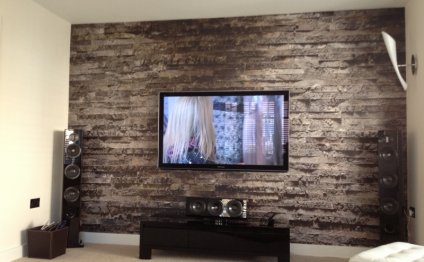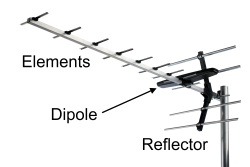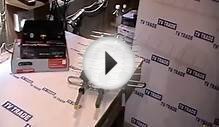
Digital TV Aerial Installation
 Digital Terrestrial Television (DTT) is regarded as various means of getting Digital tv (DTV) home. But to be able to obtain DTT transmissions and totally realise the huge benefits available from this brand new medium the choice of antenna as well as its placement needs to be very carefully considered.
Digital Terrestrial Television (DTT) is regarded as various means of getting Digital tv (DTV) home. But to be able to obtain DTT transmissions and totally realise the huge benefits available from this brand new medium the choice of antenna as well as its placement needs to be very carefully considered.
The antenna (or aerial for all of us Brits) could be the first and perhaps the most important website link inside sequence to receiving a superior quality signal for our television or digital television recorder. If you reside in a place of bad reception or don't have the proper kind of antenna, then no matter what you do later within the string, performance will probably be compromised.
Although this article provides an introduction into the antenna conditions that directly impact the top-notch reception, neighborhood antenna installer will be able to advise which antenna is best suited for your particular place.
Signal Strength
While Digital Terrestrial Television (DTT) could possibly offer improved image quality over old-fashioned analogue television through the elimination of old-fashioned picture reception problems such as for example ghosting, an acceptable signal power remains needed.
All or absolutely nothing
a weak analogue TV sign is easily recognised given that it are affected from increased noise or ‘visual snow’. Digital television but continues to offer clean reception until at least threshold is reached. Beyond this the digital information can no longer be precisely decoded plus the output from the television tuner will cease. A drop of 3dB on an electronic digital TV or set-top package is enough to make the distinction between crystal clear reception and no reception at all.
 However, before this point is reached, parts of the electronic signal will end up lost or corrupted. Although the advanced mistake modification algorithms found in DTT decoders can mask these effects to a specific degree, this might be second-best when compared with obtaining the complete high quality original sign, that is only attained with a decent high quality antenna installation.
However, before this point is reached, parts of the electronic signal will end up lost or corrupted. Although the advanced mistake modification algorithms found in DTT decoders can mask these effects to a specific degree, this might be second-best when compared with obtaining the complete high quality original sign, that is only attained with a decent high quality antenna installation.
Frequency Ranges
Digital terrestrial tv signals in the UK tend to be sent on UHF (Ultra High Frequency) bands IV and V on networks 21 – 68 (471 – 847 MHz). Each channel consumes a bandwidth of 8 MHz, the quantity of space needed for one old-fashioned analogue TV channel. Typically these networks were grouped collectively in various regularity bands:
|
Group |
Channels |
Frequency |
 Band Coverage Band Coverage |
Code |
| Group The |
21 – 37 |
471 – 599 MHz |
Lower 1/3 of band | Red |
| Group B |
35 – 53 |
583 – 727 MHz |
Middle 1/3 of band | Yellow |
| Group C/D |
48 – 68 |
687 – 847 MHz |
Top 1/3 of musical organization | Green |
| Group E |
35 – 68 |
583 – 847 MHz |
Top 2/3 of band | Brown |
| Group k |
21 – 48 |
471 – 687 MHz |
Lower 2/3 of musical organization | Gray |
| Group W |
21 – 68 |
471 – 847 MHz |
Every one of the band | Ebony |
Matching the Aerial
To extract the utmost signal strength from any gotten transmissions, the associated antenna needs to be properly matched towards the regional transmitter’s regularity band / team and polarisation. In britain the colored synthetic limit at the end of the antenna shows which group the antenna is made for.
RELATED VIDEO



Share this Post
Related posts
TV Aerial Installation Aberdeen
No call out charge Satellite Dish Provider Digital aerial installation Totally Free Quotations 12 thirty days guarantee FREE…
Read MoreTV Aerial Installation Cambridge
Bespoke Custom Installation of yours gear I will supply expert installation of all types of digital equipment from a straightforward…
Read More










